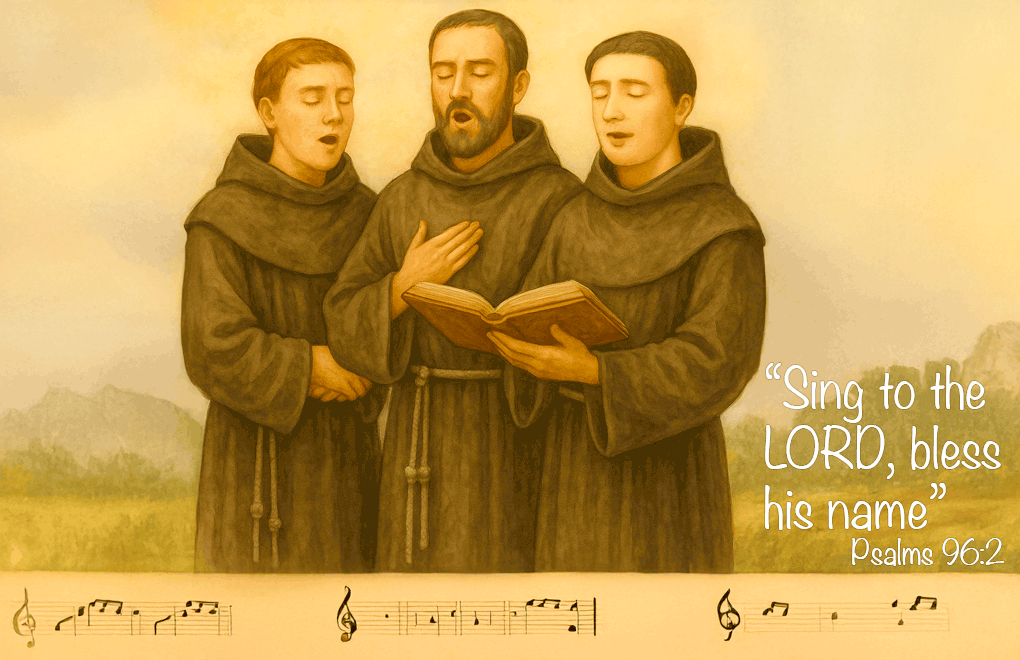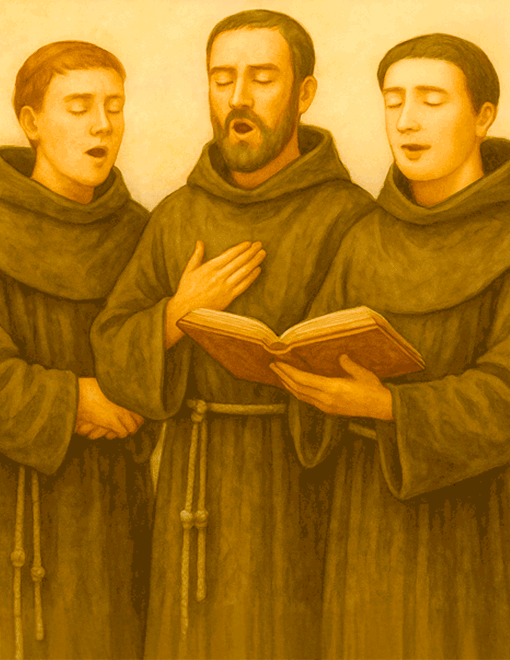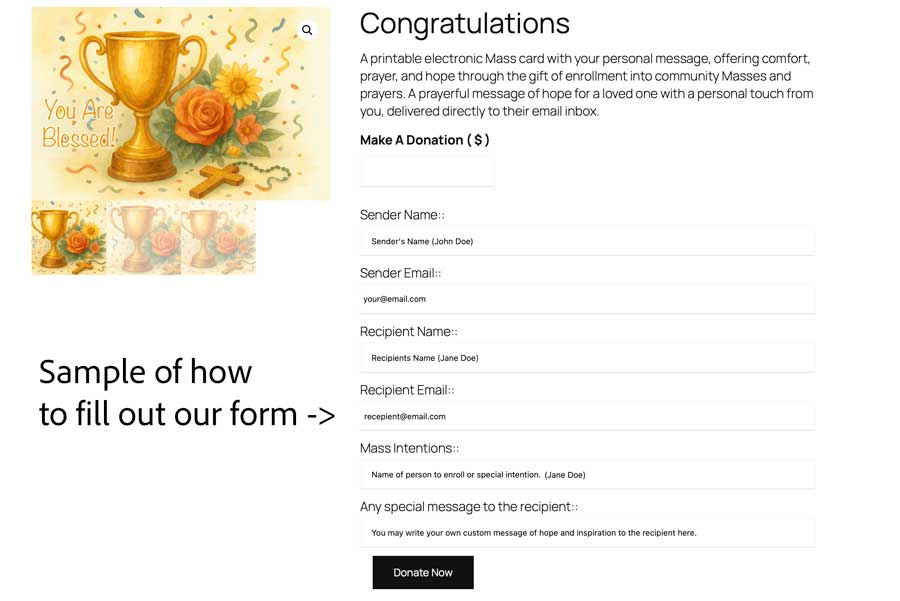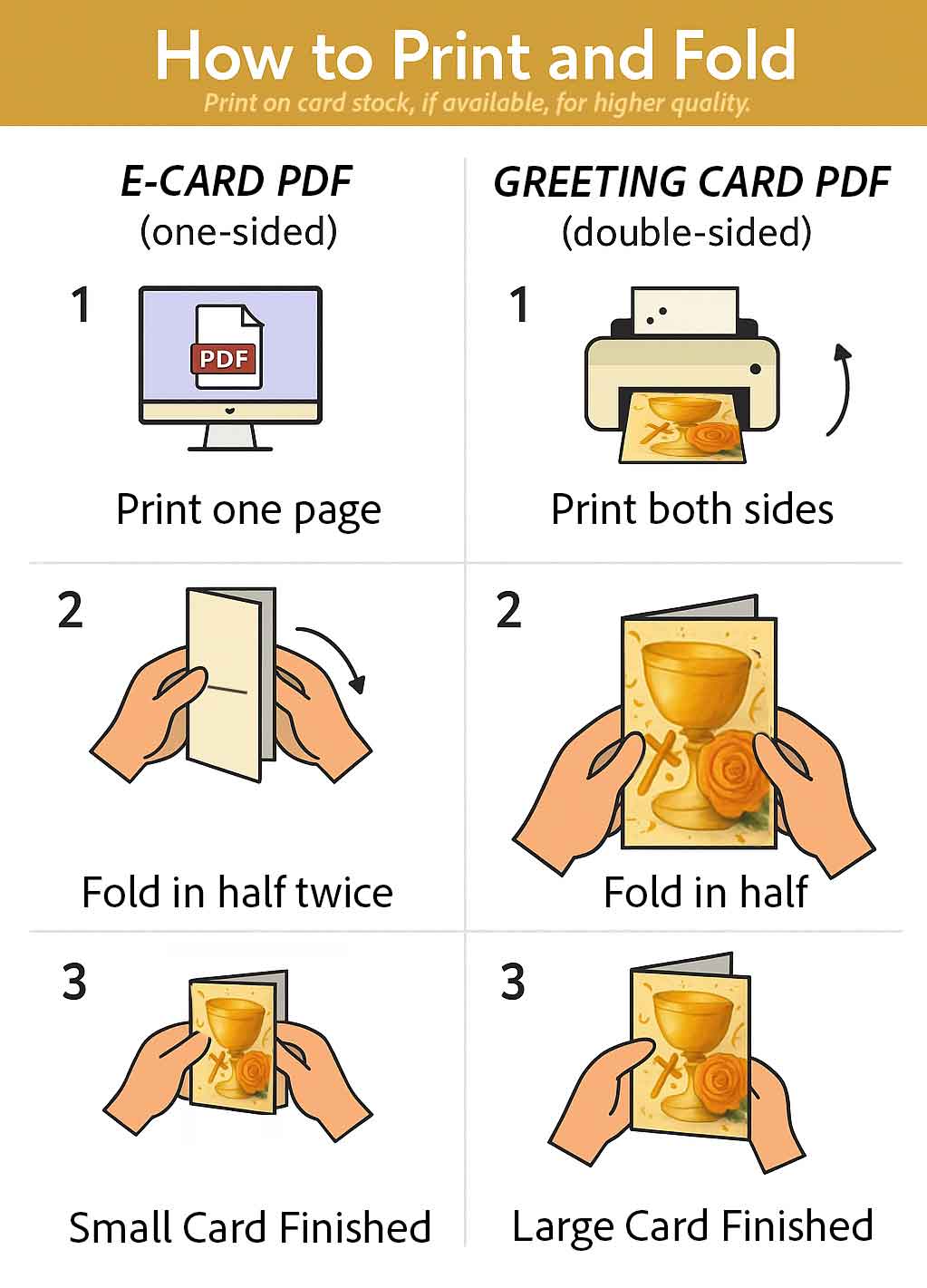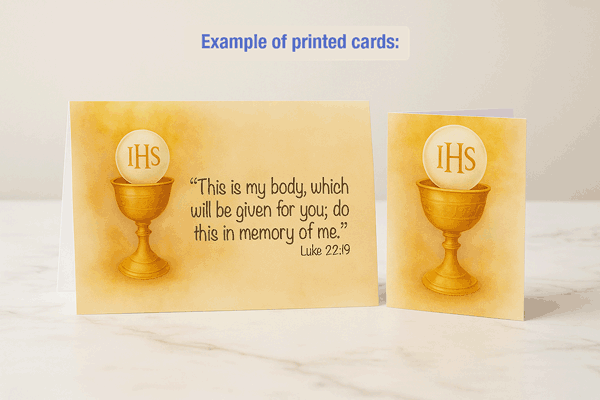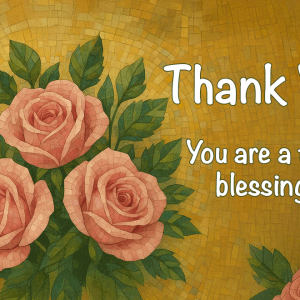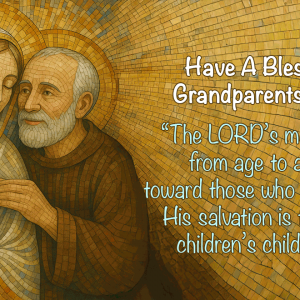Your cart is currently empty!
Gregorian Chant
Gregorian chant has long been known as the song of the Church. When it is heard, a quiet reverence fills the air. The sound is pure and prayerful. It does not rely on instruments or rhythm to hold attention. It simply carries sacred words on a single melodic line. Each note rises and falls gently, lifting your heart toward God. This is why the Church has long said that chant belongs in a special way to her liturgy.
From the earliest centuries, Christians sang the Psalms, Scripture, and prayers in ways that reflected the beauty and holiness of what they believed. The faithful learned melodies that gave shape to their prayer, and through song, they carried the Word of God into daily life.
By the sixth century, Pope Gregory the Great gave new order to the musical tradition of chants. He gathered the sacred chants of Rome, organized them and ensured that they could be preserved and taught. His work was so influential that this body of sacred song came to bear his name: Gregorian chant.
For centuries, monks in monasteries rose before dawn to sing these ancient melodies. Cathedrals taught them to choirs of boys and clerics. The Church has learned to pray through Gregorian chant.
Through time, wars, reformations, and changing musical fashions, Gregorian chant endured. It was preserved especially in monasteries, where communities such as the Benedictine monks of Solesmes in France took up the task of restoration during the nineteenth century. They studied old manuscripts, repaired damaged scores, and worked to recover the original rhythm and purity of the melodies. Their dedication gave the Church the Liber Usualis, a monumental book containing the chants for the Mass and Divine Office. Because of their careful work, chant once again became known throughout the world as the standard of sacred music.
At the Second Vatican Council, the bishops of the world reaffirmed the importance of chant in the life of the Church. The document Sacrosanctum Concilium states that “the Church acknowledges Gregorian chant as specially suited to the Roman liturgy; therefore, other things being equal, it should be given pride of place in liturgical services.” This teaching reflects the timeless character of chant. Its beauty is not a fad. It remains close to Scripture, humble in form, and universal in spirit.
Gregorian chant is sung in unison, without harmony or accompaniment. It is not meant to entertain or to be performance in nature. It invites prayerful contemplation. The melody follows the natural rhythm of the words, allowing the listener to focus on their meaning. The modes and intervals are ancient, shaped uniquely for contemplation. When even a small group choir begins to sing Kyrie eleison, the sound unites the whole Church in worship. The melody opens a path for the soul to listen more deeply.
Singing chant also connects us to the those who came before us. When we hear it in a parish today, we share something with the monks who sang it in stone chapels a thousand years ago. We join the voices of the faithful who heard it under the vaulted ceilings of medieval cathedrals. Chant bridges centuries. It unites believers in every age with the same faith and the same praise.
In our own time, the Church continues to cherish this tradition. Pope Francis spoke often of the importance of sacred music that draws people toward prayer. The Vatican’s Pontifical Institute of Sacred Music continues to train musicians and clergy in chant and polyphony, ensuring that the sound of the Church’s prayer remains faithful to its roots. Recently, the Vatican launched the initiative “Let’s Sing with the Pope”, inviting Catholics worldwide to learn the simple beauty of Gregorian chant alongside the Holy Father, Pope Leo XIV. This project helps the world rediscover a form of music that nourishes faith through reverence and peace.
Gregorian chant remains what it has always been: prayer set to melody. It does not belong to one culture or century. When the faithful listen or sing, they are united with generations who found in these tones a way to enter into the divine mystery of God. Its simplicity is sacred.
As the Church renews its attention to chant in our own day, the Spirit breathes through an ancient gift once more. In a world filled with noise, Gregorian chant teaches us again how to listen, how to pray, and how to find stillness in the presence of God.
Gregorian Mass Card
We will send a printable card to the recipient’s email with instructions how to print the card at home. Each card has the image to the left with a personal message from you (optional below). Our electronic enrollment cards offer comfort, prayer, and hope through the gift of a spiritual enrollment into our mission society which includes remembering your intentions in community Masses and prayers through our global partners and beneficiaries.
Deliver a prayerful message of hope to a loved one today.
Description
Pope Gregory the Great was known as an advocate for the poor and promoter of missions, he also is credited with popularizing Gregorian Chant.
Send a meaningful Mass Card Enrollment directly to a loved one. By enrolling them, you unite their name with the prayers and community Masses offered by our partner religious organizations around the world. This special gift supports Catholic mission work around the world. If you do not know your loved one’s email we suggest you send the card to yourself and deliver it by mail or in person.
Your gift supports the Catholic Church’s international ministries and will be used to sustain clergy and provide vital aid such as: food, clean water, health care, and education for those most in need. Our mission society partners with communities like the Franciscans, Lasallians, Jesuits, and other Catholic organizations world-wide. We don’t ask you for a specific donation; we ask only that you give the most generous amount in your heart today. Every offering is a blessing to those in need who seek Christ’s mercy. May God bless you for supporting our global missions.
